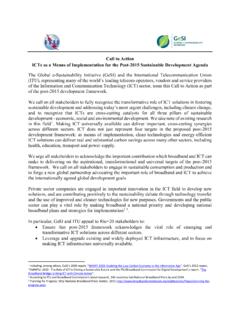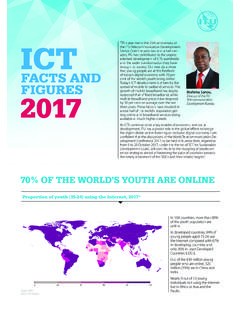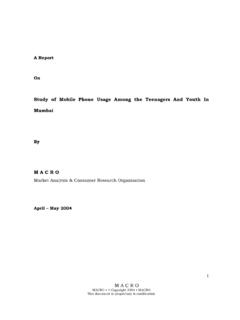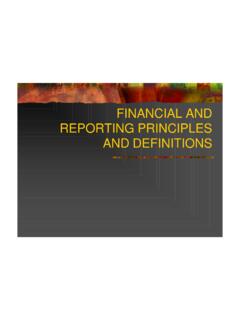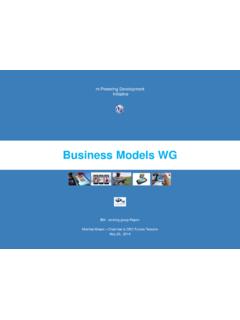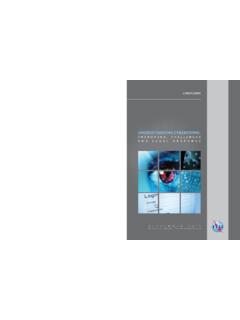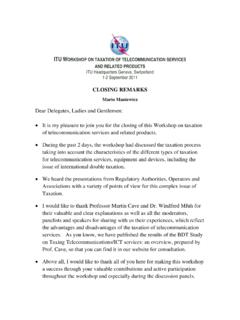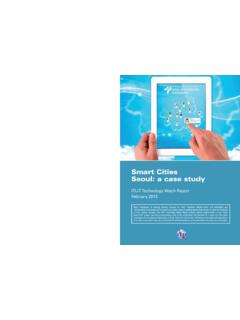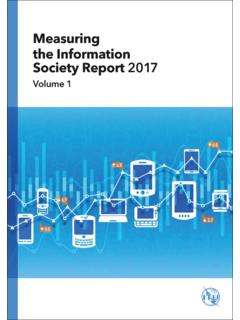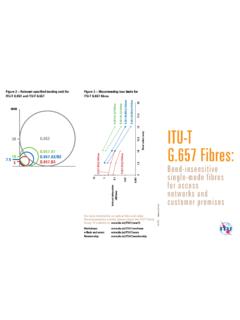Transcription of National Table for Frequency Allocation (NTFA) - ITU
1 National Table for Frequency Allocation (NTFA)Workshop on National Spectrum Management and Spectrum Management System for Developing Countries (SMS4DC)8 -12 February 2016 Suva, FijiAamir RiazInternational Telecommunication Management (SM) AllocationAllotmentAssignmentDefinitionA llocation (of a Frequency band): Entry in the Table of Frequency Allocations of a given Frequency band for the purpose of its use by one or more terrestrial or space radiocommunication services or the radio astronomy service under specified conditions. This term shall also be applied to the Frequency band (of a radio Frequency or radio Frequency channel): Entry of a designated Frequency channel in an agreed plan, adopted by a competent conference, for use by one or more administrations for a terrestrial or space radiocommunication service in one or more identified countries or geographical areas and under specified (of a radio Frequency or radio Frequency channel).
2 Authorization given by an administration for a radio station to use a radio Frequency or radio Frequency channel under specified Distribution toServicesAreas or CountriesStationsKey TermsIntroduction It is a government responsibility to develop spectrum management policies that conform to the international treaty obligations of the Radio Regulations while meeting National spectrum needs Within the National legal framework for telecommunications a spectrum management organisation has the delegated authority to prepare spectrum plans that meet government policies National spectrum plans should be reviewed regularly and, when necessary, be updated to keep pace with technology and changing demands One of the most important tools for effective spectrum management is the National Table for Frequency Allocation (NTFA).
3 This shows how the spectrum can be used in the countryDeveloping a NTFA(1) The NTFA is the published outcome of National spectrum planning The NTFA is normally developed by the NRA The Regulator would normally establish working groups to undertake the detailed technical and regulatory work and provide the expertise in Frequency assignment, spectrum engineering, monitoring and standardisation Representatives from relevant government departments would be group members to provide detailed advice on government spectrum use and requirements It is also beneficial to invite experts and practitioners from major non-government spectrum stakeholders to participateDeveloping a NTFA (2)
4 The starting point for the NTFA should be the international Frequency Allocation Table Work through each Frequency band to decide which service allocations are required nationally In the case where there is more than one organisation responsible for Frequency assignments (for example government and non-government use), decide how Frequency bands should be shared between the organisations concerned Some flexibility is possible with National allocations while maintaining conformity with the Radio Regulations Where a Frequency band is allocated to several services, the regulator may select which of those services may operate in its territory or may decide to split the band into sub-bands, each allocated to one or more servicesStructure A typical structure would follow that of the Radio Regulations adding extra columns for National use The columns might identify the service and also the owner G=Government, NG-non-Government.
5 Etc This approach is relatively easy to adopt and ensures alignment with the RRsAllocation to ServicesNational AllocationRegion 1 Region 2 Region 3 Frequency and ServiceUse4 063-4 438 MARITIME 438-4 488 FIXED except aeronauticalmobile (R)Radiolocation 438-4 488 FIXED except aeronauticalmobile (R)RADIOLOCATION 438-4 488 FIXED except aeronauticalmobileRadiolocation 438-4 450 FIXEDG4 450-4 460except aeronauticalNG4 460-4 488except aeronauticalRADIOLOCATION (Mobile NG)(Radiolocation G)Detailed information Against each Allocation it is helpful to provide Detailed information about the assignment of frequencies or blocks of frequencies to different types of system, application or major use.
6 (Assignments to individual stations are not normally shown at this level) Technical conditions for Frequency access, for example: channel arrangements, bandwidths, transmitter power limits and equipment standards Licensing conditions for Frequency accessDeveloping a NTFA(1) Using the international Allocation Table , construct a draft National Table by selecting the Allocation column for the appropriate region Identify and add all footnotes relevant for the region and country concerned Identify and reserve in the draft Table the Frequency bands used by all major international services, systems or applications which are already in use or are likely to be used in the country such as.
7 International services for maritime and aeronautical Public mobile communications systems Broadcasting (especially if there is an ITU Regional Allotment Plan) Fixed services use ITU-R recommended Frequency arrangements Non-public mobile systems Fixed and mobile satellite bands (especially if there is an Allotment Plan) Public protection and disaster relief radiocommunicationsystems (see Recommendation ITU-R )Developing a NTFA (2) Identify and reserve in the draft National Table all allocations which would be difficult to use without causing interference to (or receiving interference from) services in other countries such as: Primary Amateur Radio allocations Radio astronomy Frequencies used for Industrial Scientific and Medical applications Frequencies used for Short Range Devices.
8 See : Frequency ranges for global or regional harmonization of short-range devices (SRDs) Collect information on existing National Frequency use Potential sources include existing licensing and assignment records; request users to provide information from their own records; spectrum monitoring. This can be problematic as often records are not kept or are inadequate When existing National use is added to the NTFA, it is possible that some will not conform to the Radio Regulations or will be using frequencies within Frequency bands identified for the services and applications listed above. A transition plan may be needed for the migration of non-conforming use to the new planGeneric contents of the NTFA documentNTFARR REFERENCEC hapter 1 Meaning of abbreviationsTerms and definitionGeneral termsRR managementRR stations and systemsRR termsRR of emissions and radio equipmentRR sharingRR terms relating to spaceRR 2 Frequency bandsRR 3 Technical characteristics of stationsRR 4 Assignment and use of frequenciesGeneral rules for assignment and use of frequenciesRR 5 Frequency allocationsRR and areasRR of services and allocationsRR of RRRR of Frequency Bands Allocations in the [Country]
9 ( National Frequency Table ) National footnotes and general informationNational Frequency TableExample 1: MoldovaA simple Table showing direct alignment with ITU and simple categorisation of usage (P=shared)Example 2: BahrainSomewhat more comprehensive providing more details of utilisation and some additional informationExample 3: USAA slightly different arrangement split between Federal (Government) and non-Federal. Helpful identification of any FCC rules that apply to the bandExample 3: Graphical RepresentationUseful for public consumption and a quick overview of the use of the radio spectrumExample 4: PNG All three ITU-R regions allocations information Global Usage scenarios Graphical representationITU assistance in developing the NTFAE uropean Frequency Information System (EFIS) The ERO (part of CEPT) is developing an on-line searchable NTFA covering the whole of the CEPT region EFIS is the tool to fulfil EC Decision 2007/344/EC on the harmonised availability of information regarding spectrum use in Europe and the ECC Decision ECC/DEC/(01)
10 03 At the time of writing it was still under development Gaining all the necessary information from all of the NRAs in the right format is a massive task Nevertheless, there is much useful information available on the site include relevant reports and the ability to search individual country allocationsOther on-line systems -USThe US spectrum dashboard is an initiative to make much more information publicly available and searchableUK NTFALike other NRAs Ofcom publish a NTFA. Here we look into a part of it in detail to understand some of the issues Looking at one entry in detailAllocation to United Kingdom Services Comments 470 790 MHz BROADCASTING Mobile UK1, 8, 10, 11, 27, 72, 189, 214, 222, EU1 UK27 Services for Programme Making and Special Events are authorised to use some frequencies in this band by agreement with Ofcom.
